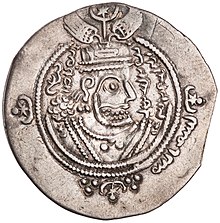| Part of a series on |
| Forced labour and slavery |
|---|
 |


Slavery in the Rashidun Caliphate refers to the chattel slavery taking place in the Rashidun Caliphate (632–661), a period when the Islamic Caliphate was established and the Islamic conquest expanded outside of the Arabian Peninsula.
Slavery in the Rashidun Caliphate was based on the Islamic law regarding slavery developed during the preceding period as well as the life and example of Muhammed and his followers, which became the role model and tradition of chattel slavery in the Rashidun Caliphate and the following Caliphate.
The slave trade in the Rashidun Caliphate expanded in parallel with the Imperial Early Muslim conquests, when non-Muslim war captives as well as civilians were enslaved, and humans were demanded by tribute and taxation from subjugated people. During the Rashidun Caliphate, the regulations regarding slavery in Islamic law were enacted on a large scale and laid the foundation for the institution of slavery in the Umayyad Caliphate.